Butterfly Conservation are working hard to save butterfly and moth populations. In this article, they tell us some of the top garden butterflies to spot and how you can get involved in their Big Butterfly Count.
Butterflies and moths are very important to the environment. They are pollinators, a vital part of the food chain, and are even recognised by the government as an indicator for the health of biodiversity. However, despite their importance, butterflies and moths are disappearing. And fast. Since 1976 76 per cent of butterflies have declined in abundance. This has led to half of UK butterflies now considered to be endangered.
Due to the destruction of habitats on a tremendous scale and pollution in the atmosphere because of climate change, butterflies and moths continue to be under threat.
So, what can we do? One significant way to protect butterflies and moths is to take part in our monitoring and recording schemes so that our scientists are aware of populations and distributions. The Big Butterfly Count is run every year to involve anyone and everyone across the UK in order to grasp the largest number of sightings (or lack thereof) to understand the health of our butterflies.
This data is then cross referenced with other research for Butterfly Conservation to create projects and protection plans to save these creatures from becoming extinct and preventing the terrible consequences to the environment that would follow.
Top 10 garden butterflies to identify
The Big Butterfly Count runs from the 14th July to 6th August and can be done from anywhere. If you are looking out in your garden, here are ten species of garden butterfly you can keep an eye out for:
1. Peacock
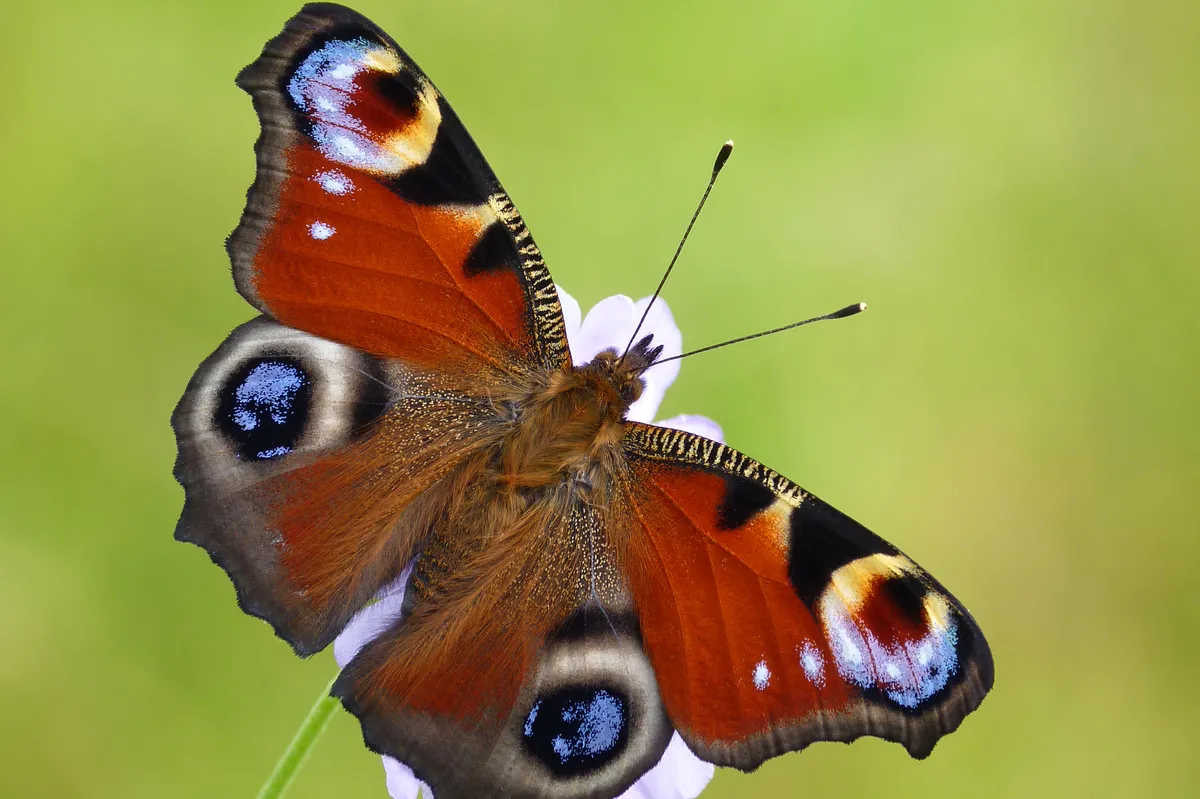
The Peacock butterfly is widespread throughout Britain and Ireland and can be easily identified by its striking patterns. On its upper-wings the blue eyespots were evolved to ward off predators, meanwhile the underside of their wings is of a dark colour, similar to that of dead leaves. The Peacock enjoys a wide range of habitats and is often spotted in gardens.
2. Red Admiral
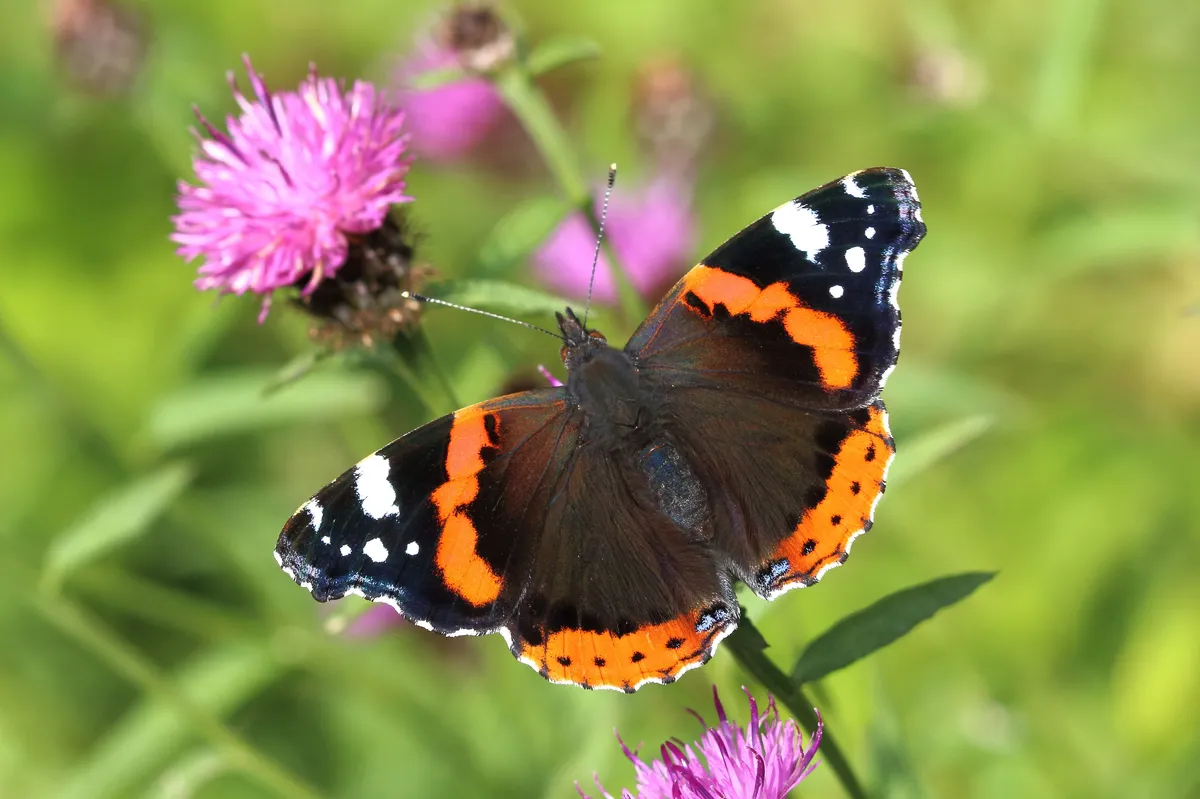
The Red Admiral is a strong-flying garden butterfly. Starting each spring and continuing through the summer they are northward migrations, starting in North Africa and Continental Europe. The females arrive in the UK and lays eggs, providing a new generation of butterflies from mid-summer (starting from around July). These great travellers then continue their voyage flying into October and November. Red Admirals can be found in almost any habitat from the seashores to the top of mountains and are also common butterflies in the garden.
3. Small Tortoiseshell
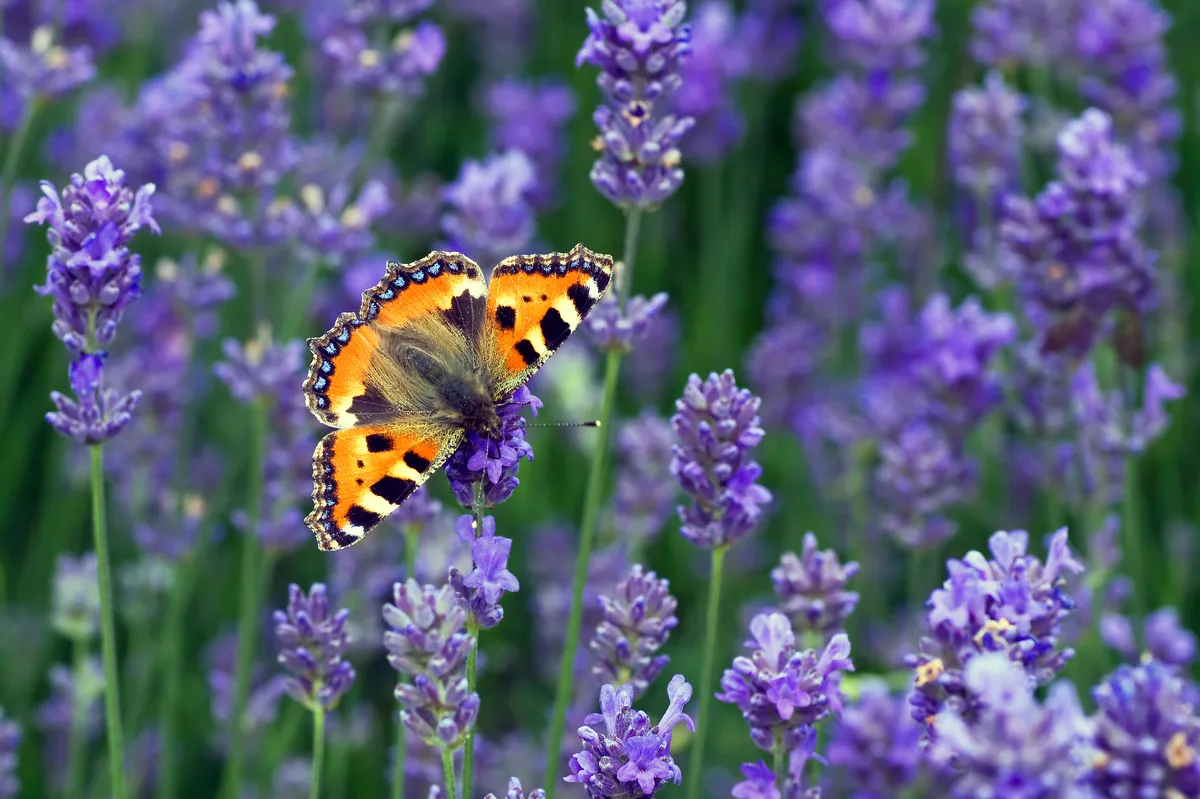
A highly recognisable and well-known British garden butterfly is the Small Tortoiseshell. These butterflies can visit garden flowers in high numbers and treat us to a swirl of orange and black colours fluttering through the air. The Small Tortoiseshell’s caterpillars enjoy feeding on both Common and Small Nettle.
4. Large White
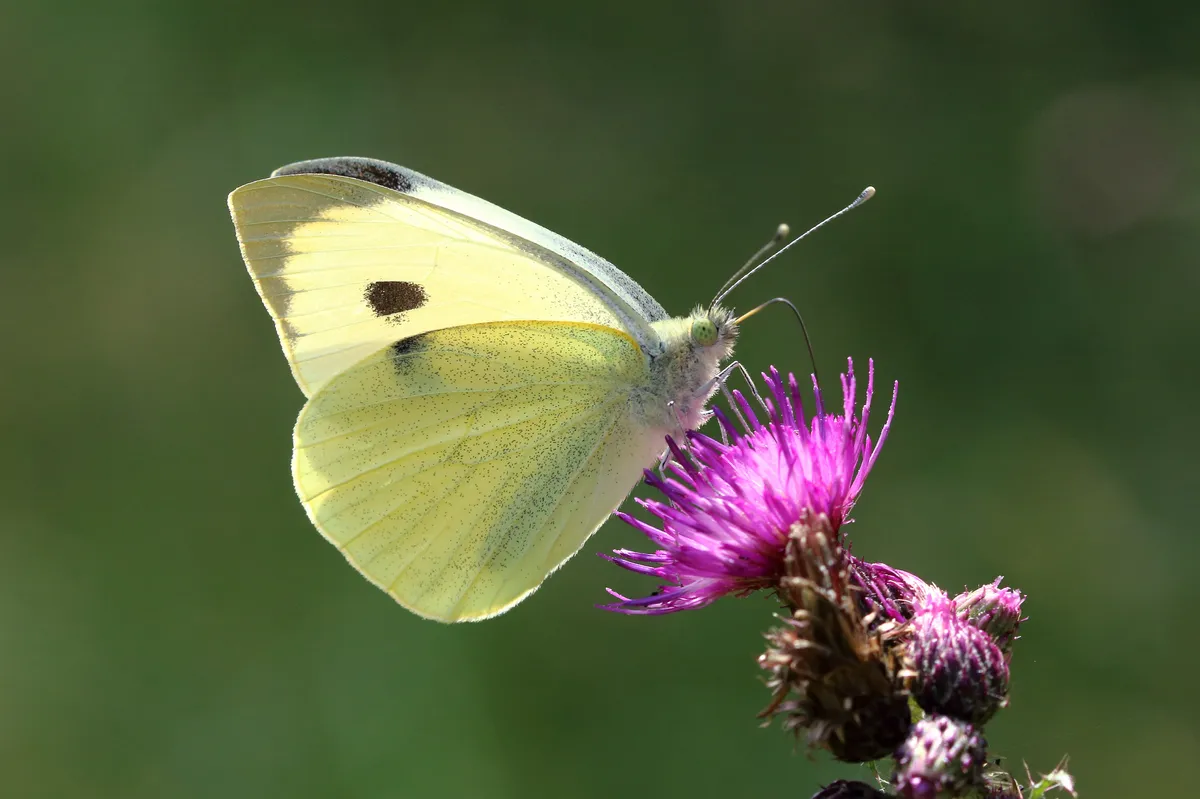
The Large White belongs to the Whites and Yellows Family and is a larger butterfly with a wingspan of 63-70mm (male to female). These brilliant butterflies are identifiable by the black tips they have on their forewings which continue to the edge of their wing. Meanwhile, the females also have two dots on their forewings which helps differentiate between the sexes. Large Whites can be seen in all of England, Scotland, Wales and Ireland and enjoy gardens particularly around allotments growing cabbages.
5. Small White
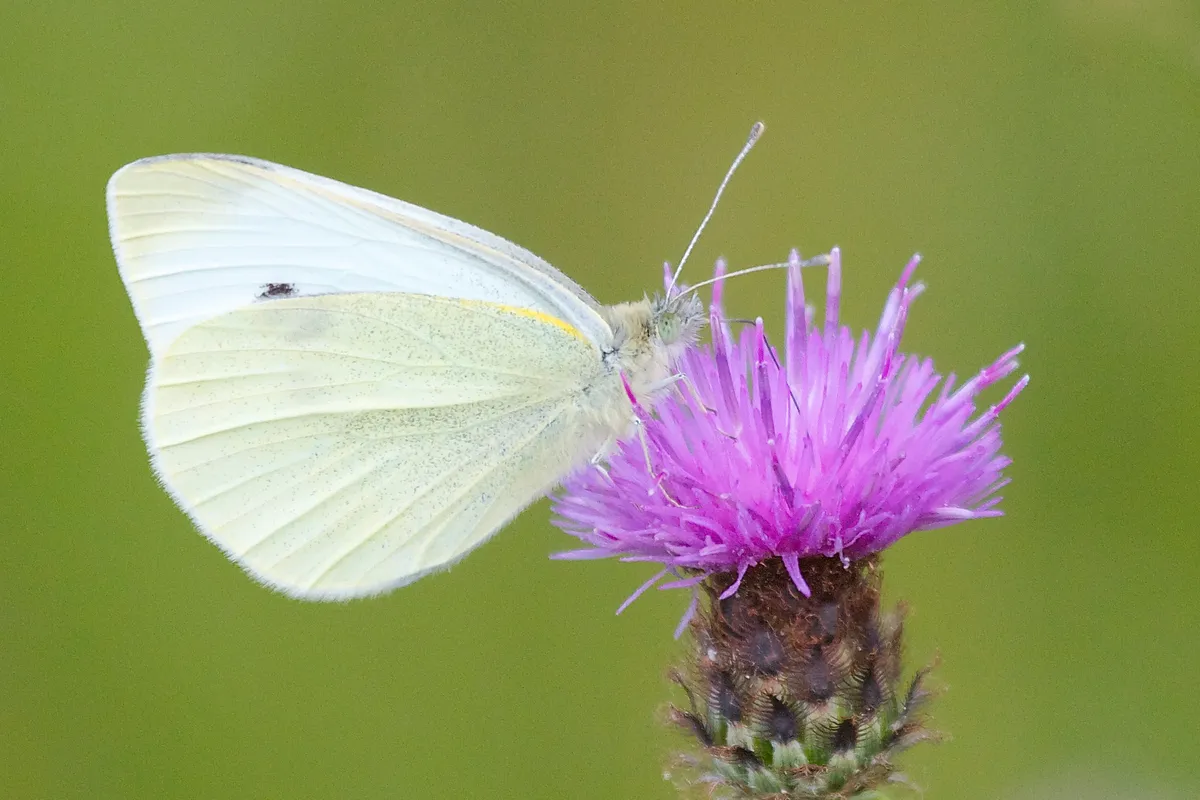
A key difference between the Large and the Small White isn’t simply the size, as on occasion some Larges may be smaller, but that the Large White also has a larger spot on the tip of their forewing as mentioned above, which the Small White lacks. The Small Whites have similar distributions and also enjoy cabbages.
To learn more about how to differentiate between the different white species of butterflies you can see a guide from Butterfly Conservation here.
6. Painted Lady
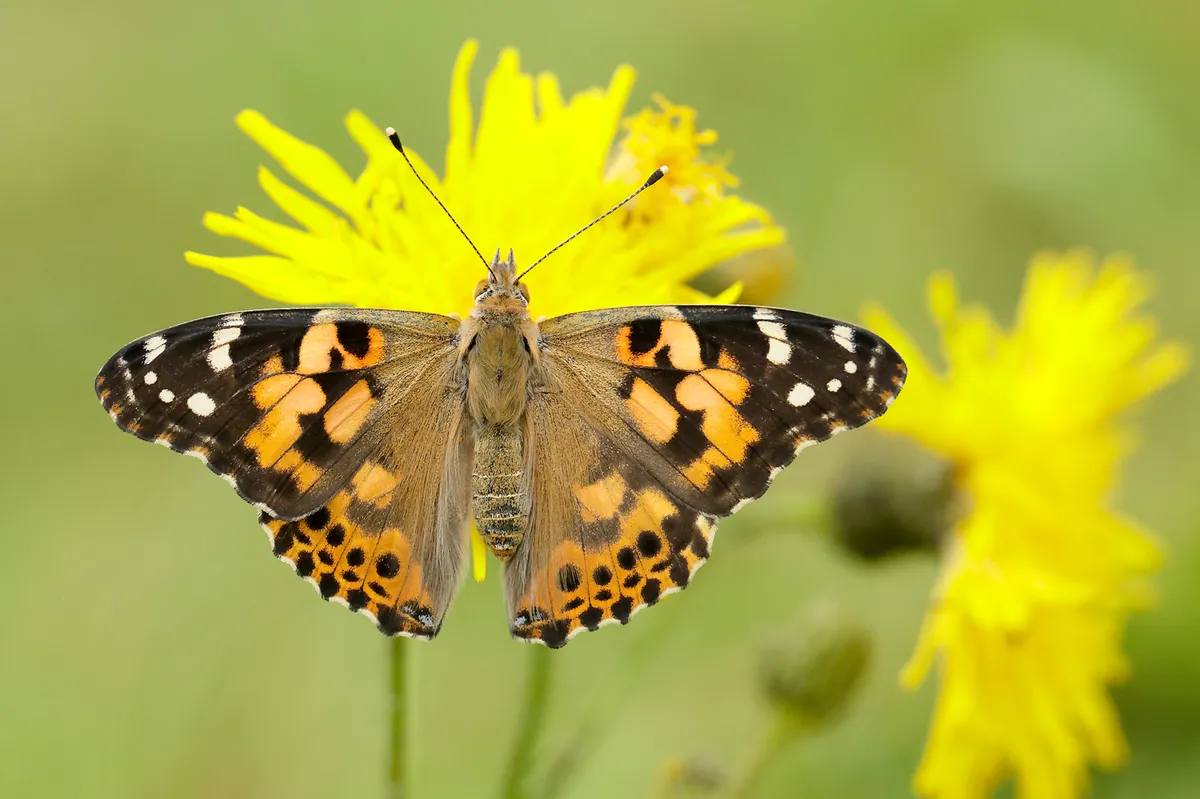
The Painted Lady is another migrant butterfly which comes from North Africa, the Middle East, and central Asia. They then recolonise in Europe before reaching Britain and Ireland, however, population numbers do vary from year to year. The Painted Lady enjoys drier and more open spaces but is fairly common so can be seen in many places across the UK. The Painted Lady has also increased in their distribution by 14% since the 1970s.
7. Comma
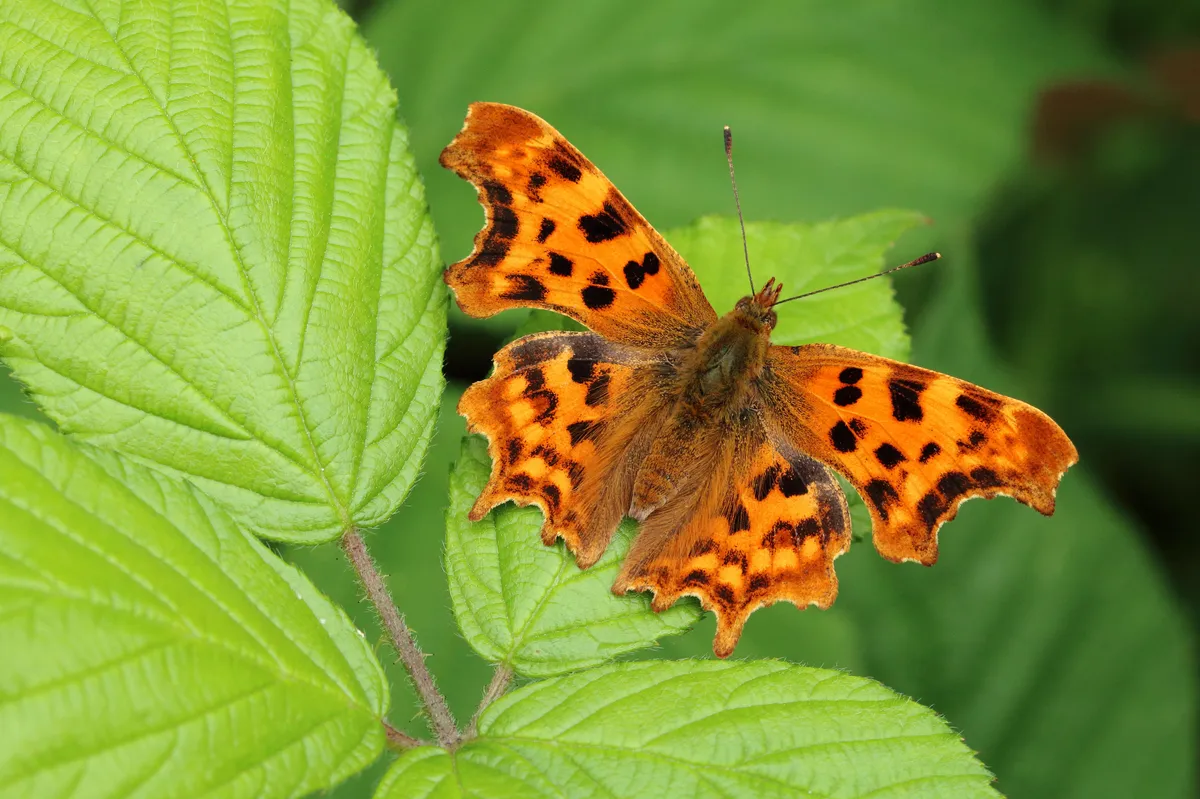
The Comma appears to have more sculptured wings with scalloped edges and a colouring similar to dead leaves. Meanwhile, their larvae have freckle-like brown and white spots. The Comma made a significant comeback after it suffered an extreme decline in the twentieth century, and it is now widespread in southern Britain and its range is expanding northwards.
8. Meadow Brown

Even in dull weather when other species are not active the Meadow Brown can still be seen and is one of the most widely spread butterflies throughout Britain and Ireland. This garden butterfly enjoys a range of habitats including more urban areas such as parks and cemeteries. However, some of the Meadow Brown’s colonies have been lost as a result of agricultural intensification.
9. Speckled Wood
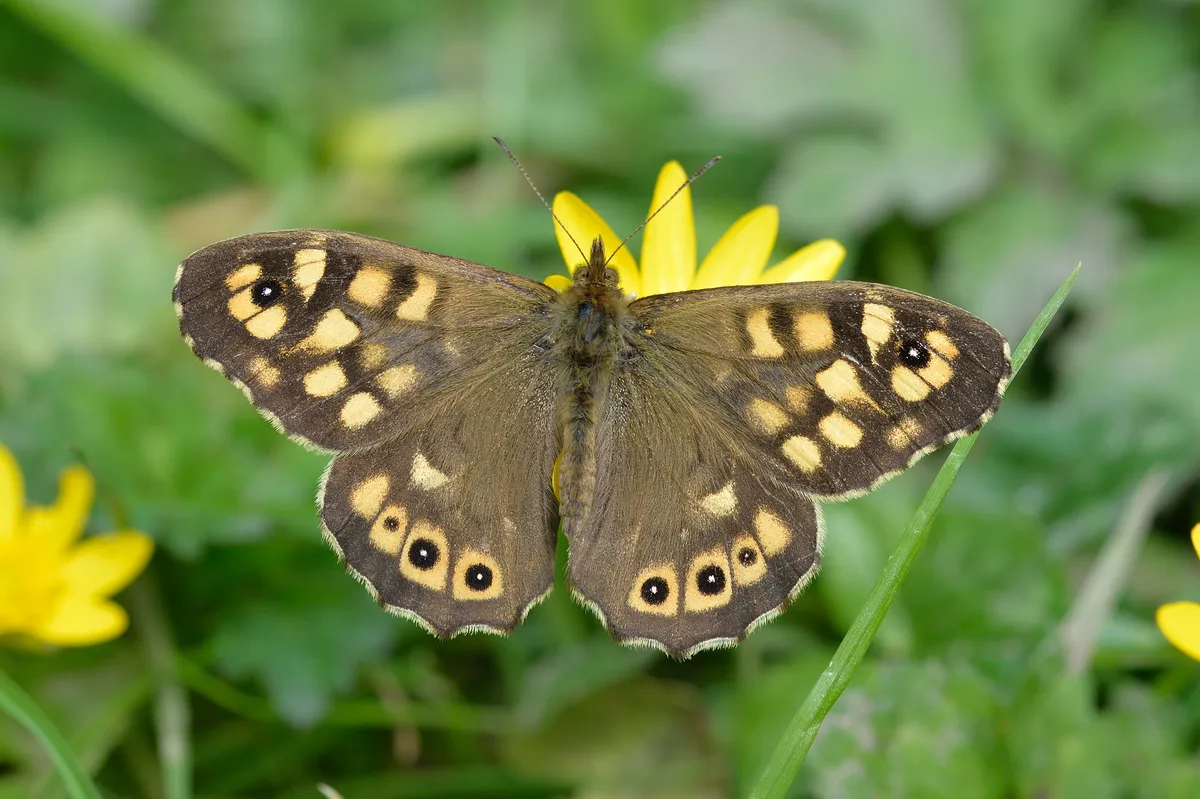
Unlike other butterflies, both the male and female Speckled Woods rarely feed on flowers and instead prefer the honeydew found in treetops. Therefore, they particularly enjoy woodland rides and glades. However, they do also enjoy more shaded areas that are slightly damp. Since the 1920s this species has spread over many areas in the east and north of England, and also Scotland.
10. Holly Blue

The Holly Blue emerges earlier than other blue butterflies making it easily identifiable in the springtime. Their distributions are spread out widely, but they can commonly be found in parks and gardens. If you are looking out for the Holly Blue this month, they are known to congregate around ivy later in the summer.
If you'd like to know how to attract more wildlife into your garden you can read our advice here.
Let us know if you take part in the Big Butterfly Count by tagging @gardens_illustrated and @savebutterflies in your posts.
Here's everything you need to know about the Big Butterfly Count